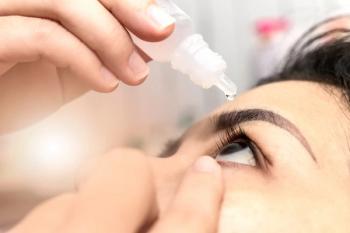
Pigmentary glaucoma mandates careful surveillance
Pigmentary glaucoma is one of the most common types of secondary open-angle glaucoma and should be monitored closely and treated aggressively when indicated to prevent irreversible vision loss.
Orlando, FL-Pigmentary glaucoma (PG) is one of the most common types of secondary open-angle glaucoma and should be monitored closely and treated aggressively when indicated to prevent irreversible vision loss, said Kevin Wolford, OD, at the annual meeting of the American Academy of Optometry.
"Patients with pigment dispersion syndrome (PDS), an important risk factor for PG, should be educated to be alert for symptoms of highly elevated IOP, including halos, blurry vision, and discomfort, which can be fleeting, and those with any signs of active pigment dispersion should be monitored closely," he added.
At-risk populations
"PDS by itself is essentially a benign condition, but about 15% of individuals affected by PDS [have conversion] to PG within 15 years," Dr. Wolford said.
Young adult myopic males (aged 20 to 40 years) are most commonly affected by PDS. PG is most common in this demographic group as well, in contrast to POAG, which occurs most often in older adults. PDS is typically bilateral, but often asymmetric.
In PDS, the peripheral iris tends to have a concave configuration, which is referred to as a reverse pupillary block configuration. The concavity brings the iris closer to the lens, leading to iris chafing and liberation of pigment. The reverse pupillary block configuration can be demonstrated using ultrasound biomicroscopy or anterior-segment OCT, and the concavity increases with accommodation.
"This feature may explain why PDS affects predominantly younger adults and decreases after presbyopia," he said.
'Burned out' PDS, PG
Active pigment dispersion may be exacerbated by exercise, especially vigorous exercise involving jarring forces, such as running, and may cease at some time in the natural history of PDS, at which point the condition is referred to as "burned out PDS."
Burned out PG, not normal tension glaucoma, may be the true diagnosis in some older patients who present with evidence of glaucomatous damage with normal IOP, said Dr. Wolford.
"All of the classic signs of PDS may fade over time, and perhaps patients suspected to have normal tension glaucoma had undiagnosed PG that is no longer active and does not need treatment. Careful monitoring to watch for glaucomatous progression will help with the differential," he said.
Newsletter
Want more insights like this? Subscribe to Optometry Times and get clinical pearls and practice tips delivered straight to your inbox.
















































.png)


